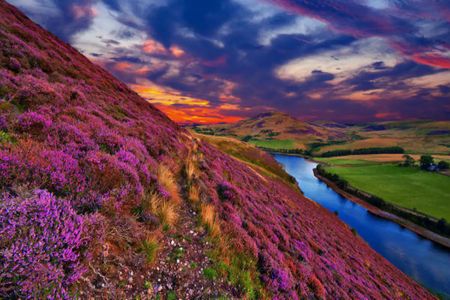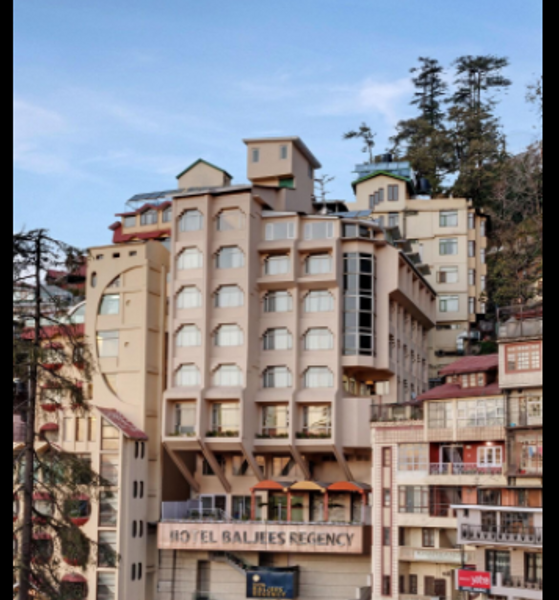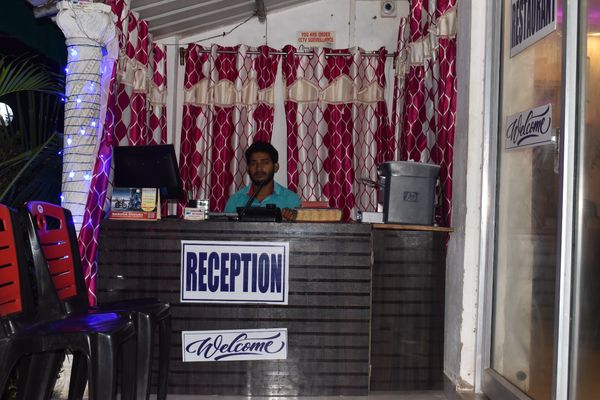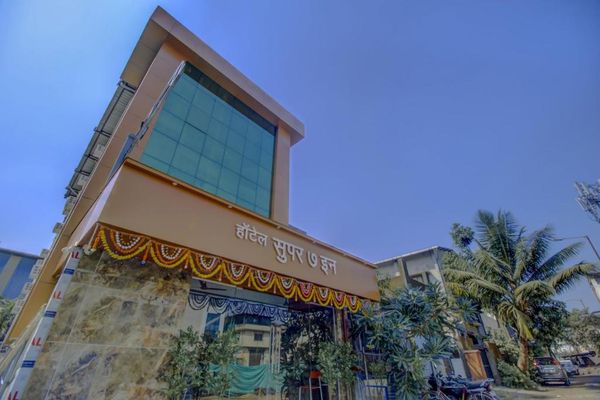Heaven in the Himalayas: Your Complete Guide to the Valley of Flowers Trek
 Palakshi Meharwal
31 May, 2025
11 mins read
37
Palakshi Meharwal
31 May, 2025
11 mins read
37

Nestled in the heart of the Indian Himalayas, the Valley of Flowers Trek is a mesmerizing journey into one of the world’s most stunning alpine landscapes. Recognized as a UNESCO World Heritage Site, this vibrant valley in Uttarakhand is famous for its sprawling meadows carpeted with countless species of wildflowers, dramatic mountain views, and an almost mythical ambiance that feels like nature’s own cathedral. If you’re looking for an unforgettable trekking experience that blends adventure with natural beauty, the Valley of Flowers should be at the top of your list.
Where is the Valley of Flowers?
Located in the Chamoli district of Uttarakhand, the Valley of Flowers lies in the Western Himalayas, within the larger Nanda Devi Biosphere Reserve. The valley spans about 87.5 square kilometers and rests at an altitude ranging between 3,300 and 3,600 meters above sea level. The closest town, Govindghat, serves as the main starting point for most trekkers.
Why Visit the Valley of Flowers?
The trek is not only a visual feast but also a spiritual and ecological experience. Thousands of botanists, nature lovers, photographers, and trekkers make their way here every year, drawn by the valley’s rare biodiversity and scenic splendor. Over 600 species of flora have been identified in the region, including blue poppies, primulas, orchids, and marigolds, many of which are endemic or endangered. Moreover, if you’re lucky, you might catch a glimpse of wildlife such as the Himalayan black bear, snow leopard, or musk deer—though sightings are rare.
Best Time to Visit
Timing your trek correctly is crucial to making the most of this natural wonder. The Valley of Flowers opens to visitors from June to early October, but the peak blooming season is from mid-July to mid-August. During this period, the monsoon rains awaken the valley, triggering a kaleidoscopic explosion of colors that lasts only a few weeks.
Keep in mind that the region receives substantial rainfall during the monsoon, so trekkers should be well-prepared for slippery trails and sudden weather changes.
How to Reach the Valley of Flowers
Reaching the Valley of Flowers involves a combination of road travel and trekking. Here’s a brief breakdown:
- By Air: The nearest airport is Jolly Grant Airport in Dehradun, roughly 285 km from Govindghat.
- By Train: The nearest railway station is Rishikesh, which is well-connected to major Indian cities.
- By Road: From Rishikesh or Dehradun, you can hire a taxi or take a bus to Joshimath, followed by a short drive to Govindghat.
- The Trek: From Govindghat, a 14 km trek (or mule ride) takes you to Ghangaria, the base village. From Ghangaria, it’s another 3-4 km trek to the Valley of Flowers.
Trek Itinerary: A Day-by-Day Guide
While itineraries may vary slightly depending on the group or tour operator, here’s a general outline:
- Day 1: Rishikesh to Govindghat via Joshimath (Drive)
- Day 2: Govindghat to Ghangaria (Trek – 14 km)
- Day 3: Ghangaria to Valley of Flowers and back (Trek – 6-7 km round trip)
- Day 4: Optional excursion to Hemkund Sahib or rest day
- Day 5: Ghangaria to Govindghat (Trek back) and depart
Hemkund Sahib: A Sacred Detour
Many trekkers extend their journey to Hemkund Sahib, one of the highest gurudwaras in the world, situated at an altitude of 4,329 meters. The 6 km steep trek from Ghangaria is physically demanding but spiritually enriching. The serene lake beside the shrine and the backdrop of snow-clad peaks add to the magic of the experience.
Accommodation and Food
While the Valley itself is a protected area with no overnight stays allowed, the base village of Ghangaria offers several guesthouses, lodges, and small hotels. Don’t expect luxury, but most accommodations are comfortable enough for trekkers. Meals are generally simple—think rice, dal, roti, and vegetables—but satisfying after a day on the trail.
For a more secure and seamless experience, consider booking your trek with a reputable travel operator. This ensures permits, guides, and accommodation are well-managed.
Permits and Entry Fees
All visitors must obtain permits to enter the Valley of Flowers, which are available at Ghangaria. Entry is valid for three days, and fees may vary for Indian and foreign nationals. As of recent updates, the charges are around ₹150 for Indians and ₹600 for foreigners per day. Be sure to carry valid ID proof.
What to Pack
Being well-prepared is key to a safe and enjoyable trek. Essentials include:
- Sturdy trekking shoes with good grip
- Rain gear (poncho, waterproof jacket)
- Warm clothing (layers work best)
- Sunscreen, sunglasses, and a hat
- Reusable water bottle
- First aid kit and personal medication
- Trekking pole (optional but helpful)
Pro tip: Avoid plastic as much as possible; the valley is an eco-sensitive zone and plastic is strictly prohibited.
Health and Fitness Tips
Though the Valley of Flowers Trek is considered moderate in difficulty, it still demands a decent level of fitness. Regular walking, jogging, and light strength training can help you prepare in advance. Stay hydrated and give yourself time to acclimatize, especially if planning to visit Hemkund Sahib.
If you have altitude sensitivity or a pre-existing health condition, consult your doctor before the trek.
Sustainability and Responsible Trekking
The Valley of Flowers is not just a destination—it’s a fragile ecosystem. Trekkers should adhere to Leave No Trace principles:
- Don’t litter or pick flowers
- Stay on marked trails
- Avoid loud noises and music
- Respect local customs and wildlife
Engaging with the local community in responsible ways—such as purchasing handmade souvenirs or choosing local homestays—also goes a long way in supporting sustainable tourism.
Final Thoughts
The Valley of Flowers isn’t just a trek—it’s a soulful escape into a realm where nature unfolds its most poetic verses. Whether you're an avid trekker, a botanist, or a nature lover, this Himalayan paradise offers something deeply enriching. As with all great journeys, preparation and mindfulness are key. Come with respect, curiosity, and a light footprint, and the valley will reward you with memories that linger for a lifetime.
Written By:
Palakshi Meharwal



Hotels at your convenience
Now choose your stay according to your preference. From finding a place for your dream destination or a mere weekend getaway to business accommodations or brief stay, we have got you covered. Explore hotels as per your mood.





